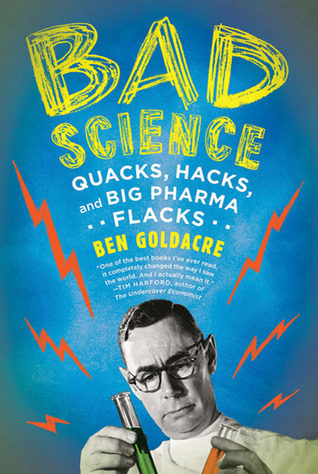More on this book
Community
Kindle Notes & Highlights
by
Ben Goldacre
Read between
April 3 - April 8, 2025
The diamond at the bottom shows the pooled answer: that there is in fact very strong evidence indeed for steroids reducing the risk—by 30 to 50 percent—of babies dying from the complications of immaturity. We should always remember the human cost of these abstract numbers: babies died unnecessarily because they were deprived of this lifesaving treatment for a decade. They died even when there was enough information available to know what would save them, because that information had not been synthesized together, and analyzed systematically, in a meta-analysis.
“The drive to keep patients fully informed has led to exponential increases in the formal requirements for consent that only serve to confuse and frighten patients while delaying their access to needed medical attention.”
What is odd, perhaps, is how the primacy of patient autonomy and informed consent over efficacy, which is what we’re talking about here, was presumed but not actively discussed within the medical profession. Although the authoritative and paternalistic reassurance of the Victorian doctor who “blinds with science” is a thing of the past in medicine, the success of the alternative therapy movement—practitioners mislead, mystify, and blind their patients with sciencey-sounding “authoritative” explanations, like the most patronizing Victorian doctor imaginable—suggests that there may still be a
...more
When you look at these enormous, overwhelming interlocking webs, it’s hard not to be struck by the versatility of the human body and how it can perform acts of near alchemy from so many different starting points.
There are a number of problems with this as a theory. First, who says free radicals are always bad? If you’re going to reason just from theory, and from the diagrams, then you can hook all kinds of things together and make it seem as if you’re talking sense. As I said, free radicals are vital for your body to kill off bacteria in phagocytic immune cells, so should you set yourself up in business and market an antioxidant-free diet for people with bacterial infections?
Terrible things happen in medicine, when it goes right as well as when it goes wrong. Everybody agrees that we should work to minimize the errors, everybody agrees that doctors are sometimes terrible; if the subject fascinates you, then I encourage you to buy one of the libraries’ worth of books on clinical governance. Doctors can be awful, and mistakes can be murderous, but the philosophy driving evidence based medicine is not.
it seems to me that a lot of the stranger ideas people have about medicine derive from an emotional struggle with the very notion of a pharmaceutical industry. Whatever our political leanings, we all feel nervous about profit taking any role in the caring professions, but that feeling has nowhere to go. Big pharma is evil; I would agree with that premise.
But because people don’t understand exactly how big pharma is evil, their anger gets diverted away from valid criticisms—its role in distorting data, for example, or withholding lifesaving AIDS drugs from the developing world—and channeled into infantile fantasies. “Big pharma is evil,” goes the line of reasoning; “therefore homeopathy works and the MMR vaccine causes autism.” This is probably not helpful.
This is not dissimilar to the way that paintings can exploit shortcuts in our perceptual system: as objects become more distant, they appear smaller, and “perspective” can trick us into seeing three dimensions where there are only two, by taking advantage of this strategy used by our depth-checking apparatus. When our cognitive system—our truth-checking apparatus—is fooled, then, much like seeing depth in a flat painting, we come to erroneous conclusions about abstract things. We might misidentify normal fluctuations as meaningful patterns, for example, or ascribe causality where in fact there
...more
The subjects in the experiment played the role of a teacher trying to make a child arrive punctually at school for 8:30 a.m. They sat at a computer on which it appeared that each day, for fifteen consecutive days, the supposed child would arrive sometime between 8:20 and 8:40, but unbeknownst to the subjects, the arrival times were entirely random and predetermined before the experiment began. Nonetheless, all the subjects were allowed to use punishments for lateness and rewards for punctuality, in whatever permutation they wished. When they were asked at the end to rate their strategy, 70
...more
We see patterns where there is only random noise. We see causal relationships where there are none. These are two very good reasons to measure things formally. It’s bad news for intuition already.
Most of us exhibit something called attributional bias: we believe our successes are due to our own internal faculties, and our failures are due to external factors; whereas for others, we believe their successes are due to luck, and their failures to their own flaws. We can’t all be right.
Science coverage is further crippled, of course, by the fact that the subject can be quite difficult to understand. This in itself can seem like an insult to intelligent people, like journalists, who fancy themselves able to understand most things, but there has also been an acceleration in complexity in recent times. Fifty years ago you could sketch out a full explanation of how an AM radio worked on the back of a napkin, using basic school-level knowledge of science, and build a crystal set in a classroom that was essentially the same as the one in your car. When your parents were young,
...more


